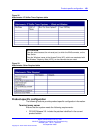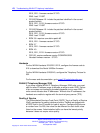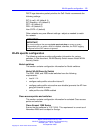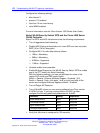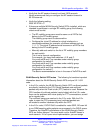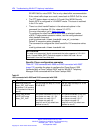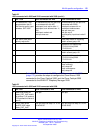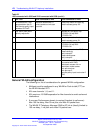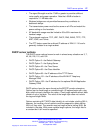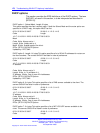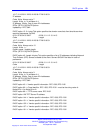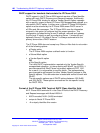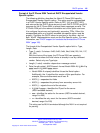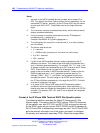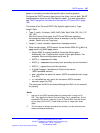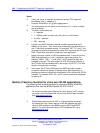
DHCP server options 177
• The signal Strength must be -70dB or greater to provide sufficient
voice quality and proper operation. Note that -60dB or better is
required for 11 MB data rate.
•
Wireless bridges are not permitted because they contribute to
bottleneck delays.
• The transmission power must be the same on all APs and match the
power setting on the handsets.
•
AP bandwidth usage must be limited to 65 to 80% maximum for
handset usage.
• The protocols used are: TCP, UDP, DHCP, DNS, WINS, TFTP, FTP,
ARP, ICMP, and Telnet.
•
The PTT feature uses the multicast IP address of 224.0.1.116 and is
generally isolated to a single subnet.
DHCP server options
The DHCP server options known to work in almost every situation are 3, 7,
42, 66, 128, 151, and 152:
•
DHCP Option 3—the Default Gateway
•
DHCP Option 7—the Syslog Server
•
DHCP Option 42—the Time Server
•
DHCP Option 60—the Class Identifier
•
DHCP Option 66—the IP address of the TFTP Server
•
DHCP Option 151—the IP address of the WLAN IP Telephony
Manager 2245
•
DHCP Option 152—the IP address for the optional WLAN Application
Gateway 2246
DHCP options have the same format as the BOOTP vendor extensions.
Options can be fixed length or variable length. All options begin with a tag
byte, which uniquely identifies the option. Fixed length options without data
consist of only a tag byte. The value of the length byte does not include
the tag and length fields.
Options containing NVT ASCII data (ideally) do not include a trailing NULL;
however, the receiver of such options must be prepared to delete trailing
NULLs if they exist. The receiver must not require that a trailing NULL be
included in the data. With some variable-length options, the length field is
a constant but it still must be specified.
Nortel Communication Server 1000
WLAN IP Telephony Installation and Commissioning
NN43001-504 03.04 Standard
23 September 2008
Copyright © 2004–2008 Nortel Networks
.



